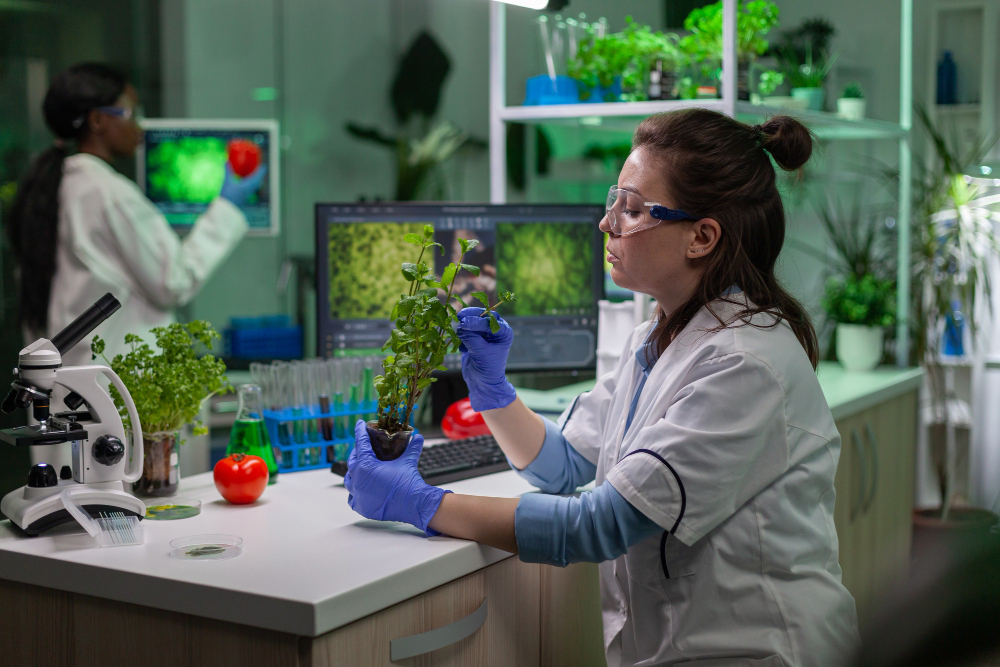Plants have always held a central place in scientific research due to their essential role in the natural world. However, when it comes to studying plant biology, ecology, environmental science, and even aspects of human health, one tool frequently makes an appearance—the potted plant. These humble containers of soil and greenery serve as valuable assets in scientific inquiry, offering a controlled environment for experimentation and insights into various aspects of the plant kingdom and beyond.
In this exploration, we delve into the multifaceted role of potted plants in scientific research, shedding light on their significance and the diverse ways in which they contribute to the advancement of knowledge.
Controlled Experimentation
One of the primary reasons scientists turn to potted plants is the ability to create controlled environments for experimentation. Researchers can manipulate and fine-tune variables such as light, temperature, humidity, and soil composition to investigate their effects on plant growth, development, and physiology. This control is critical for isolating specific factors and understanding their influence on plant behavior.
For example, if a botanist wishes to study the impact of varying light intensity on photosynthesis rates, potted plants allow them to expose different groups of plants to precise light conditions, keeping other variables constant. This controlled setup ensures that any observed differences in plant responses can be attributed to the manipulated variable—light intensity in this case.
Observation and Measurement
Potted plants offer a convenient platform for observing and measuring various aspects of plant biology. Researchers can easily access and measure parameters such as leaf growth, root development, flowering, and fruit production without disrupting the plant’s growth. This accessibility allows for real-time monitoring and data collection, enabling scientists to track changes and trends over time.
For instance, ecologists studying the impact of soil quality on plant root growth can grow potted plants with varying soil compositions and periodically excavate the roots for measurement and analysis. Such experiments provide valuable insights into how plants adapt to different soil conditions.
Reproducibility
Reproducibility is a cornerstone of scientific research. Potted plants offer a high degree of reproducibility, as they can be grown in a consistent manner across multiple experiments. Researchers can use the same potting mix, plant species, and growth conditions to replicate experiments, ensuring that results are reliable and statistically significant.
This reproducibility is especially important in fields such as agriculture and horticulture, where consistent growth conditions are critical for evaluating crop performance, pest resistance, and the effectiveness of fertilizers or treatments.
Teaching and Education
Beyond research, potted plants play a pivotal role in educational settings. They serve as powerful tools for teaching biological concepts and processes to students of all ages. Potted plants offer a tangible and visually engaging way for learners to explore plant biology, ecology, and environmental science.
In school classrooms, students may conduct simple experiments with potted plants to learn about topics like photosynthesis, transpiration, and the plant life cycle. This hands-on approach fosters a deeper understanding of scientific principles and encourages curiosity about the natural world.
Phytoremediation Studies
Phytoremediation, the use of plants to remove pollutants from soil and water, is an area of research where potted plants are frequently employed. Scientists investigate how different plant species absorb, accumulate, and detoxify contaminants under controlled conditions. Potted plants offer a versatile and manageable platform for such studies.
For instance, researchers may grow potted plants in soil contaminated with heavy metals or organic pollutants to assess the plants’ ability to remediate the polluted environment. By carefully controlling variables, scientists can gain insights into which plant species are most effective at cleansing specific types of contaminants.
Plant Breeding and Trait Evaluation
Plant breeders utilize potted plants extensively in their work to develop new crop varieties with desirable traits. Potted plants provide a controlled environment for assessing traits such as yield, disease resistance, drought tolerance, and fruit quality.
In a breeding program, potted plants may be grown in greenhouses or growth chambers to evaluate the performance of different genetic lines. Breeders can select plants with the most promising characteristics for further propagation and development of new cultivars. This careful selection ensures that new crop varieties meet the needs of farmers, consumers, and changing environmental conditions.
Environmental Studies
Potted plants also find application in environmental studies and assessments. Researchers use them to simulate specific environmental conditions or evaluate the impact of pollutants or stressors on plant health.
For instance, potted plants may be subjected to controlled levels of air pollution in a laboratory setting to study how various pollutants affect plant growth and physiology. These controlled experiments contribute to our understanding of the environmental factors that influence plant health in real-world ecosystems.
Urban Greening and Air Quality Research
Potted plants have gained recognition for their role in improving urban environments and air quality. Researchers conduct experiments with potted plants to assess their ability to remove indoor air pollutants, such as volatile organic compounds (VOCs) and formaldehyde.
These studies contribute to our knowledge of how plants can be used as natural air purifiers in homes and office spaces. Potted plants not only enhance indoor aesthetics but also promote healthier indoor air quality by absorbing and metabolizing harmful chemicals.
In the realm of scientific research, potted plants stand as versatile allies, offering controlled environments, opportunities for observation and measurement, and a platform for experimentation across a wide range of disciplines. Whether they are used to elucidate the mysteries of plant biology, address environmental challenges, educate future scientists, or improve urban living, potted plants play an integral role in advancing our understanding of the natural world. Their adaptability and accessibility make them indispensable tools for scientists seeking to unearth the secrets of the botanical realm and beyond.
Image by DCStudio on Freepik





Leave a Reply
You must be logged in to post a comment.